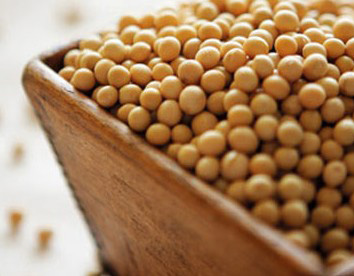
1. Soybean husk
Soybean husks account for 6% to 8% of the total grain weight of soybeans. 32% of the iron in soybeans is concentrated in the husks. In addition, the husks also contain about 86% dietary fiber and carbohydrates, 8.8% crude protein, 1.2% crude fat, and other trace components.
(1) Preparation of dietary fiber: Due to the high content of dietary fiber with obvious physiological functions in soybean skin, products containing soybean skin fiber mainly include dietary fiber beverages, bread, biscuits, etc. When using soybean skin dietary fiber in bread, biscuits, and other products, it needs to be subjected to high-temperature treatment first. This type of product not only enhances the dietary fiber, but also improves the quality of the product.
(2) Iron fortifiers are concentrated in the iron in soybean husks, with a lower content of phytic acid and a smaller impact on the absorption of iron elements in the body. They can be widely used as iron fortifiers in baked goods, beverages, health products, and other foods. According to experiments, adding 5% soybean skin powder to bread will increase the iron content from 0.70mg/100g to 1.89mg/100g. Therefore, soybean skin is a natural food source for treating iron deficiency anemia.
(3) In addition to cellulose and hemicellulose, soybean husks in biodegradable and convenient tableware also contain soluble fibers such as pectin, mannan, and coca bean gum, making them a good fiber source for making molded disposable biodegradable and convenient tableware.
2. Soybean embryo
Soybean germ is the reproductive organ of soybeans, accounting for 2.5% of the total weight of soybeans. Soybean germ is rich in nutrients, containing 28% protein and about 10% oil, which is equivalent to the oil content of wheat germ. The content of unsaturated fatty acids is as high as 80%. In addition, it also contains various physiological active substances, such as soy isoflavones, soy saponins, soy oligosaccharides, vitamin E, and steroids, which have special physiological effects and nutritional value.
(1) Soybean germ oil is rich in unsaturated fatty acids, including linolenic acid and linoleic acid, with a content of up to 77.2%. From the perspective of fatty acid composition, soybean germ oil has high nutritional value because these two types of fats, as required fatty acids, are essential for maintaining the function and normal activity of various tissues in the human body. Soybean germ oil is also rich in vitamin E, with a vitamin E content of 190mg/100g. Vitamin E is a strong antioxidant that has functions such as controlling the oxidation of unsaturated fatty acids, protecting cell membranes, enhancing immunity, and delaying human aging. Soybean germ oil is also rich in phytosterols, with a sterol content of 0.37%. It has the ability to regulate high cholesterol and blood lipids, as well as anti-tumor properties., It plays an anti-aging role in the synthesis of fatty acids.
(2) Isoflavones in soybeans contain an average of 0.2% to 0.4% of total flavonoids, with 1.40% to 1.76% in the embryo, 0.15% to 0.32% in the cotyledons, and 0.01% to 0.02% in the seed coat. Research shows that soybean isoflavones, including soybean glycosides, soybean glycosides and genistein, are a class of important physiological active substances with weak estrogen activity, antioxidant activity, anti hemolytic activity and antifungal activity, which can well prevent and control the occurrence of leukemia, hyperosteogeny, colon cancer, gastric cancer, breast cancer cancer and prostate cancer, especially in the prevention and improvement of breast cancer and prostate cancer. According to researchers from Fujiko Corporation in Japan and the University of Tokyo, the daily intake of isoflavones per person is estimated to be 40mg to 50mg. Soy isoflavones, which were previously considered as anti nutritional components, are considered a potential 21st century vitamin due to their significant preventive effects on cardiovascular disease and cancer. Therefore, soy isoflavones have a wide range of effects in functional foods, pharmaceutical products, and functional additives. According to a survey, the annual demand for soy isoflavones in the market is over 1500t, while the current annual production is less than 500t.
(3) Soy saponins account for approximately 0.6% of soybean content, including 17 different types of saponins. Soybean total saponins belong to the triterpenoid saponins, which have the properties of general saponins. They have a large molecular weight, are not easy to crystallize, and appear as five colored or milky white powder. Recent studies have shown that soybean saponins have strong physiological functions and are natural control agents to prevent the occurrence of chronic diseases, such as controlling platelet aggregation, controlling tumor cell growth and preventing atherosclerosis, which have important pharmaceutical value. In addition, soy saponins are often added as additives to food and cosmetics to improve product quality and performance. China is a major country in processing soybeans, but soy saponins and other substances have not been properly utilized.